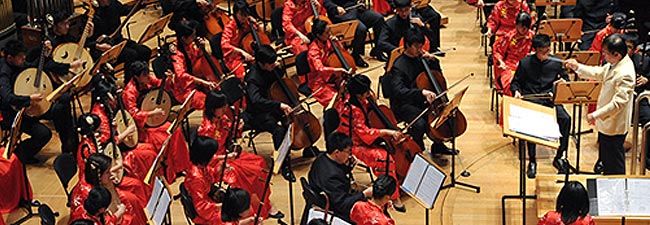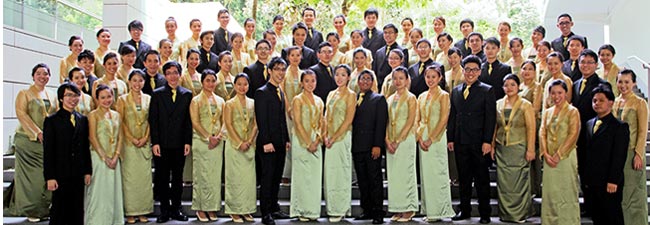IN-CONJUNCTION

CFA Speaker Series
Register HereIN THE NEW SINGAPORE INTERNATIONAL FESTIVAL OF ARTS (SIFA)
Fri 21 Mar 2014 | 6 – 7.30pm | ST Lee Atrium, NUS Museum
Free admission. Please register by 21 March 2014, 5pm.
For more information, kindly contact Ms. Eunice Yap at euniceyap@nus.edu.sg
The O.P.E.N (Open. Participate. Enrich. Negotiate) is the Singapore International Festival of Arts' outreach to engage the public. Styled as a popular academy, it links the public with the ideas, issues and themes of the 2014 festival through platforms from films, talks, workshops and dialogues to performance demonstrations in intimate and casual settings.
Join NUS Law alum Ong Keng Sen, Festival Director of SIFA, as he shares his vision and direction for the new SIFA and find out how more Singaporeans can " own " and take part in the Festival. Keng Sen is the TheatreWorks artistic director (on leave) and was NUS Adjunct Associate Professor till 2013.
Event Programme
6.00pm - 6.30pm | Registration and tea reception
6.30pm - 7.30pm | Dialogue session with Ong Keng Sen, Festival Director of SIFA
Music

VESTIGE 《三月天•迹》
Book TicketsSun 23 Mar | 7.30pm | Esplanade Concert Hall | $58, $32, $26 &$22 |
Festival concessions apply.
In Vestige 《三月天•迹 》, NUS Chinese Orchestra pays tribute to the strength of the human spirit through music masterpieces inspired by impressions left behind by heroes and historical events. Peng Xiu Wen’s The Terracotta Warriors Fantasia《秦兵马俑幻想曲》depicts the long suffering of the Qin soldiers under the cruel rule of the Qin Emperor and the soldiers’ families yearning for their unlikely return. Symphonic Poem: Ga Da Mei Lin《嘎达梅林》composed by Xin Hugang and arranged by Liu Wen Jin , describes the bravery of Mongolian leader, Gada Meiren who led an uprising against the sale of land in his homeland to the Chinese settlers.
NUS Chinese Orchestra will also perform the world premiere of a rare composition of a liuqin concerto Dance of Dreams《梦之舞》 by composer Xu Zhi Yuan 徐志远 who is known for his persistence and discipline in composing only world class masterpieces. The concerto features liuqin soloist Seetoh Poh Lam.
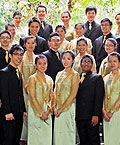
VARSITY VOICES 2014: PINNACLE
Book TicketsFri 28 Mar | 7.30pm | Esplanade Concert Hall | $25, $22, $20 & $18 |
Festival concessions apply.
Winner in three categories in 66th International Musical Eisteddfodd in Llangollen, Wales, The National University of Singapore Choir proudly presents a repertoire of seminal choral works at their annual concert Varsity Voices 2014: Pinnacle.
From the raw human emotions of the sacred Psalms of David in Heinrich Schutz’s Die mit Tränen säen werden mit Freuden ernten, to medieval animal myths in Ola Gjeilo's Unicornis Captivatur and the exuberance of young children in Ko Matsushita’s Japanese Game, each piece chosen in Pinnacle has been regarded as innovative and highly significant in their time and marked a pinnacle in the evolution of choral music.
Join The NUSChoir in this exciting journey through music which will lead to their next milestone in their illustrious history - The World Choir Games ’14 in Riga, Latvia.
Theatre - Scriptwriting

Writing Lab 2014
Public Script Reading Session
Thu 27 Mar | 7pm | ST Lee Atrium, NUS Museum
To register, please email museum@nus.edu.sg or call 6516 8817.
Writing Lab 2014 is a seven-week script-writing mentorship programme, running from 13 February to 27 March 2014 facilitated by Huzir Sulaiman of Checkpoint Theatre, and organised by NUS Museum for NUS Arts Festival 2014. Under Huzir's guidance, students will write short plays that draw from, refer to, or intersect with the collections of NUS Museum. The programme will consist of one mentoring session and one public talk per week, culminating in a public script reading session on 27 March 2014 during the NUS Arts Festival 2014.

History and Its Currency Talk Series:
Making Multilingual Theatre:
The Strange Case of 'National Language Class' by Paul Rae
Thu 18 Feb | 8pm | NUS Museum
To register, please email museum@nus.edu.sg or call 6516 8817.
Light refreshments will be served before the talk.
A talk series In conjunction with Writing Lab and NUS Arts Festival 2014
Based on a 1959 painting by Chua Mia Tee of the same name, National Language Class, a multi-lingual performance directed and co-written by Paul Rae, the performance explored the relationships between language, ethnicity and national identity, and the shifting power dynamics that subsequently emerged. In this inaugural session, Rae will discuss the process and the strategies used to develop the performance, particularly with regards to the issues and implications between translation and performance.
Paul Rae teaches on the Theatre Studies Programme at the National University of Singapore, and is co-director, with Kaylene Tan, of spell#7 performance (www.spell7.net). He is the author of Theatre & Human Rights (Palgrave Macmillan, 2009), Associate Editor of the journal Theatre Research International, and has published widely on contemporary theatre and performance. His current projects include a monograph entitled Real Theatre, and a co-edited volume, It Starts Now: Performance Avant-Gardes in East and Southeast Asia (with Peter Eckersall).

History and Its Currency Talk Series:
The Pinterest Instinct by Tan Pin Pin
Thu 6 Mar | 8pm | NUS Museum
To register, please email museum@nus.edu.sg or call 6516 8817.
Light refreshments will be served before the talk.
A talk series In conjunction with Writing Lab and NUS Arts Festival 2014
Tan Pin Pin reveals her process that resulted in two recent films Snow City (2011) and The Impossibility of Knowing (2010). The first grew from her huge and random archive of Singapore scenes shot for another film (that were never used) and the second, from her 10 year collection of Straits Times news clippings detailing crimes of passion. She hopes to show how the Pinterest Instinct can be used as a vital creative resource.
Tan Pin Pin is an award-winning director who is known for her body of work on Singapore and her histories. Her films have screened in Berlinale, Busan, Vision du Reel and the Flaherty Seminar. In Singapore, the films have received sold out theatrical screenings and toured schools. She has won awards from Cinema du Reel, Taiwan International Documentary Festival, as well as a Student Academy Award for Moving House. To Singapore with Love, about Singapore exiles, was awarded Best Director at the Dubai International Film Festival.

History and Its Currency Talk Series:
Transcribe / Translate / Transpose / by Heman Chong
Thu 13 Mar | 8pm | NUS Museum
To register, please email museum@nus.edu.sg or call 6516 8817.
Light refreshments will be served before the talk.
A talk series In conjunction with Writing Lab and NUS Arts Festival 2014
While Heman Chong is known primarily as a conceptual artist, writing in general continues to inform his practice as an artist, curator and writer. Beginning with his own work Calendars (2020-2096) – a work which sees Heman investigate the architecture of a future in Singapore through a series of imagined calendar pages, Heman will also draw references from others such as Tehching Hsieh, John Baldessari and Kenneth Goldsmith in order to discuss the relationship between texts and images. Writing, for Heman, thus becomes a form of image-making, just as images might be said to possess a certain textuality as well. As graphic marks, both texts and images illustrate the very repeatability and reproducibility of things, and thus the potential for things to become other than themselves. It is perhaps here that we return to the very question of the future in Heman’s practice at large.
Heman Chong is an artist, curator and writer. He received his MA in Communication Art & Design from the Royal College of Art, London, in 2002. His conceptually charged investigations into how individuals and communities imagine the future generate a multiplicity of objects, images, installations, situations and texts. Chong has been exhibiting since 1997 and has developed solo exhibitions at Wilkinson Gallery, Rossi & Rossi, NUS Museum, Motive Gallery, Vitamin Creative Space, Art in General, The Substation and Künstlerhaus Bethanien, among others. He has also participated in numerous international biennials, including Asia Pacific Trienniale (APT7) (2012), Performa 11 (2011), Momentum 6 (2011), Manifesta 8 (2010), 2nd Singapore Biennale (2008), SCAPE Christchurch Biennial (2006), Busan Biennale (2004) and 10th India Triennale (2000), and represented Singapore in the 50th Venice Biennale (2003). He is currently working on a yearlong curatorial collaboration between Witte de With and Spring Workshop entitled “Moderation(s)".

History and Its Currency Talk Series:
Lilian Chee & Looi Wan Ping | Contrapuntal Alliances:
Reconsidering Domesticity through Architecture and Film
Thu 20 Mar | 8pm | NUS Museum
To register, please email museum@nus.edu.sg or call 6516 8817.
Light refreshments will be served before the talk.
A talk series In conjunction with Writing Lab and NUS Arts Festival 2014
Domestic architectures are productive sites of identity and class formation, as well as gender, privacy and ethnicity struggles. However, much architectural emphasis is confined to iconic designs or larger urban initiatives, leaving aside the majority of domestic spaces and their interior environments. Moreover, the often banal, homogeneous, and repetitive domestic spaces and rituals frequently obscure their complexities. Given that domestic space is also produced secondhand through occupation, beyond and after the architect has left his mark, how does one record, and represent, this space’s ‘afterlife’? Is it even possible to re-imagine such a space within the disciplinary limits of architectural discourse and representation which tend towards the extraordinary and the vast? Through the making of a research film Three Flats which revolves around lives and spaces located in Singapore’s public housing, this session proposes that while architectural discourse and representation may project the visible, film reveals the intelligible and heterogeneous dimensions of domesticity and its architecture. Advocating a contrapunctal relationship between filmic and architectural vision, it explores the various perceptual and theoretical perspectives opening up to the architectural researcher-filmmaker who moves between two sides of the camera.
Lilian Chee obtained her doctorate from University College London and is Assistant Professor at the National University of Singapore. Her recent publications include “Materializing the Tiger in the Archive,” in Feminist Practices (2011), “The Domestic Residue,” in Gender Place Culture (2012), Conserving Domesticity (Novatio, 2012), “The Public Private Interior” in The Handbook of Interior Design (2013); and is co-editor of Asian Cinema and the Use of Space: Interdisciplinary Perspectives (Routledge, forthcoming 2015). She is also regional editor for the Journal of Architecture. Three Flats is a collaboration with film maker Looi Wan Ping, from 13 Little Pictures.
Looi Wan Ping graduated from the National University of Singapore with a Bachelor of Social Sciences (Hons) in Sociology, before going on to pursue an Advanced Diploma in Film Production at Ngee Ann Polytechnic. Since then, he has been involved with many projects, including the critically-acclaimed Sandcastles (2010) for which he served as Art Director. In 2009, Wan Ping directed his first feature film White Days which won the Green Chilies Audience Award (2nd Prize) at the Asian Hot Shots Berlin Festival in 2010. In 2012, Wan Ping was conferred the Young Artist Award in Film by the National Arts Council of Singapore.
Exhibitions at NUS Museum
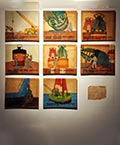
IN SEARCH OF RAFFLES' LIGHT | AN ART PROJECT WITH CHARLES LIM
Till 27 April 2014
Attempting to remember histories attached to sites related to Singapore’s seas, In Search of Raffles’ Light | An Art Project with Charles Lim is an interdisciplinary project guided by the Raffles Lighthouse (estd. 1854) as an evolving metaphor to chart how and where history intersects with the present. Responding to a series of correspondence which outlines the beginnings of a maritime museum in Singapore following independence from the British, this exhibition presents new works developed by Singapore artist Charles Lim, and mobilises everyday objects, museum artefacts, archival texts and maps, photographs, paintings and prints that range from the national to the personal, the archaeological to the biological, and the historical to the present. Understood in this light, the exhibition may be seen as a polyvocal attempt at illuminating the complexities between contemporary practice, museums, and their cultural artefacts.
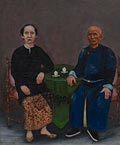
INHERITED AND SALVAGED: FAMILY PORTRAITS FROM THE STRAITS CHINESE COLLECTION
Till 6 July 2014
This exhibition presents over 50 painted and photographed portraits donated to NUS Museum. Originating from individual and family collections, and others acquired from antique and 'karung guni' dealers, the portraits date from the 19th to early 20th Centuries and capture some of the earliest visual representations of Peranakan Chinese in Malaya and the Dutch East Indies. Through this assemblage, the exhibition explores the early portrait making industry in the region, the social and cultural contexts sustaining such artistic patronage, and contemporary motivations in collecting and preserving these works.

